You Will Never Get Stuck Again!
This promise is immense; every day and every night, we are trying our best to fulfill it by helping others, leaving something worthwhile behind us, and living for a purpose that is "Enrich & Spread knowledge everywhere".
Join 15000+ Exceptional
Latest Python Wiki's
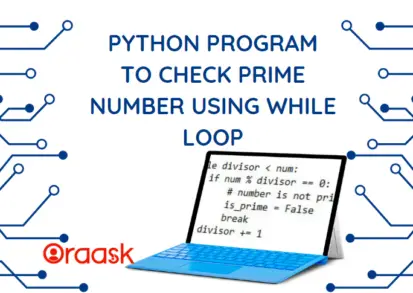
2 years ago
4 mins read
Python Program to Check Prime Number using While Loop
Python Program to Check Prime Number using While Loop
Prime numbers are an essential concept in mathematics and computer science. They are numbers that are only divisible by 1 and themselves. In ...
Oracle ACE Pro ♠ | Oracle Senior ERP Technical Consultant

2 years ago
3 mins read
Python Delete Variable: How to Free Up Memory Space in Your Code
Python Delete Variable: How to Free Up Memory Space in Your Code
Introduction: Python is a popular programming language used in a variety of applications, from data analysis to web development. One ...
Oracle ACE Pro ♠ | Oracle Senior ERP Technical Consultant

2 years ago
7 mins read
How to Swap Characters in String in Python – 3 Techniques
How to Swap Characters in String in Python – 3 Techniques
Swapping the string is one of the most commonly used operations by programmers. The string is a data type to store the text ...
Freelancer | Coder | Reader | Student | Learner
Latest Data Visualization Wiki's

2 years ago
10 mins read
Python Pandas Date: Parsing, Arithmetic, and Resampling
Python Pandas Date: Parsing, Arithmetic, and Resampling
Pandas is one of the most popular libraries of Python. This data visualization library deals with the operations related to data. In data ...
Freelancer | Coder | Reader | Student | Learner

2 years ago
5 mins read
Exploring Python Pandas Options: Your Data Power Tool
Exploring Python Pandas Options: Your Data Power Tool
Pandas is a trendy Python library used for data analysis. One of the essential features of data analysis is the options system. This ...
Freelancer | Coder | Reader | Student | Learner

2 years ago
6 mins read
Python Pandas Join: Where Datasets Converge
Python Pandas Join: Where Datasets Converge
Introduction The topic of Python Pandas join is crucial for data manipulation and analysis. It is a process of ...
Freelancer | Coder | Reader | Student | Learner
Latest Java Wiki's
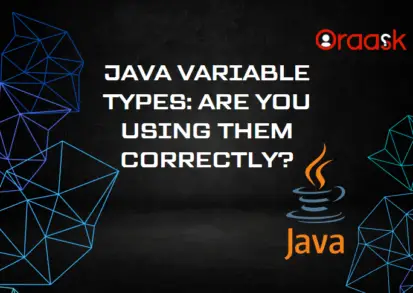
2 years ago
7 mins read
Java Variable Types: Are You Using Them Correctly?
Java Variable Types: Are You Using Them Correctly?
Introduction Programs manage data stored in memory. On the machine level, data can only be called by the numeric ...
MSc degree in Computer Engineering
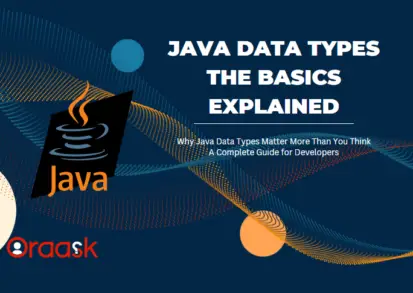
2 years ago
6 mins read
Java Data Types: The Basics Explained
Java Data Types: The Basics Explained
Introduction Each variable in Java must have a data type. There are several Java data types available. The type determines ...
MSc degree in Computer Engineering

3 years ago
5 mins read
Java Arrays
Java Arrays
Introduction An array is a set of members. Each member can contain an object or primitive value. Arrays in Java ...
MSc degree in Computer Engineering
Latest Oracle Wiki's
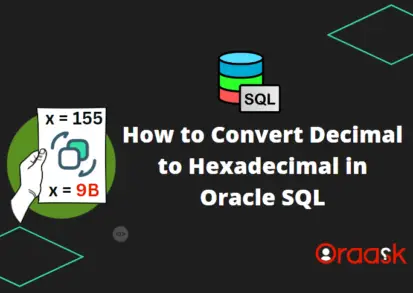
2 years ago
3 mins read
How to Convert Decimal to Hexadecimal in Oracle SQL
How to Convert Decimal to Hexadecimal in Oracle SQL
Introduction Are you struggling to convert decimal numbers to hexadecimal in Oracle SQL? Don't worry; you are not alone. ...
Oracle ACE Pro ♠ | Oracle Senior ERP Technical Consultant

2 years ago
9 mins read
How to Create Table with Foreign Key in Oracle
How to Create Table with Foreign Key in Oracle
Introduction If you are working with large amounts of data in an Oracle database, you may have come across ...
Oracle ACE Pro ♠ | Oracle Senior ERP Technical Consultant
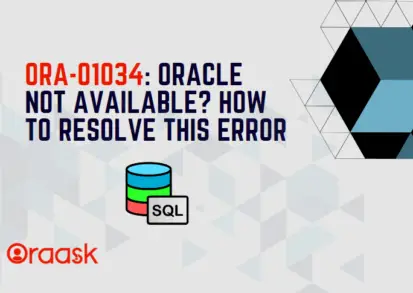
2 years ago
4 mins read
ORA-01034: Oracle Not Available – What is it, Causes, and How to Resolve
ORA-01034: Oracle Not Available – What is it, Causes, and How to Resolve
Oracle databases are widely used in the industry; sometimes, you may encounter errors when working with them. One such error is the ORA-01034 ...
Oracle ACE Pro ♠ | Oracle Senior ERP Technical Consultant
Latest JavaScript Wiki's

2 years ago
3 mins read
Easily Convert Decimal to Hex in JavaScript Today
Easily Convert Decimal to Hex in JavaScript Today
As a developer, knowing how to work with different numeral systems is essential. One such system is hexadecimal, which is commonly used in ...
Oracle ACE Pro ♠ | Oracle Senior ERP Technical Consultant
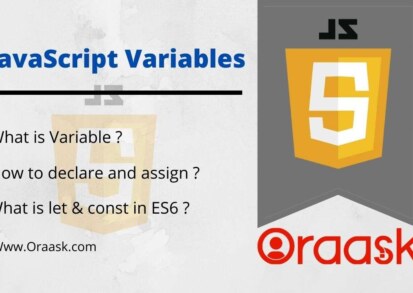
4 years ago
1 mins read
JavaScript Variables
JavaScript Variables
What are JavaScript variables? Variables are simply containers where we can store values. You can simply place the values in ...
isouravghosh
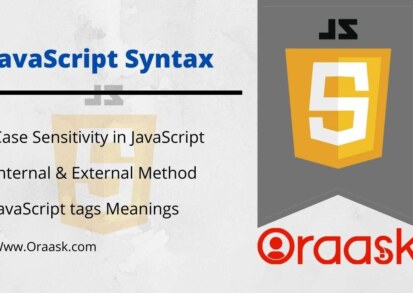
4 years ago
3 mins read
JavaScript Syntax
JavaScript Syntax
Introduction In HTML documents and webpages JavaScript can be included in two ways. One way is to include the JavaScript ...
isouravghosh
How do I append an object to an array in JavaScript?
Use the push() function to append to an array:[code]// initialize array var arr = [ "Adam", "panju", "keri" ];// append new value to the array arr.push("oraask");console.log(arr);[/code]Will print["Adam", "panju", "keri", "oraask"]
Use the push() function to append to an array:
[code]// initialize array
var arr = [
“Adam”,
“panju”,
“keri”
];
// append new value to the array
arr.push(“oraask”);
console.log(arr);[/code]
Will print
See lessHow to to check old and new values for item in Oracle Form ?
to get the database value there is one property (database_value) and here is the example to achieve this: [code] BEGIN IF :BLOCK.ITEM = GET_ITEM_PROPERTY('BLOCK.ITEM', database_value) THEN RETURN; END IF; END; [/code] sometimes this property return value (0) if so you can use another way : -take theRead more
to get the database value there is one property (database_value) and here is the example to achieve this:
[code]
BEGIN
IF :BLOCK.ITEM = GET_ITEM_PROPERTY(‘BLOCK.ITEM’, database_value) THEN
RETURN;
END IF;
END;
[/code]
sometimes this property return value (0) if so you can use another way :
-take the value in the pre text item trigger and keep it in global
– as about this value in when validate item trigger and so on
hope this may help you 🙂
See lessHow to return N of rows after ordering in oracle sql ?
You can use a subquery for this like [code] select * from ( select * from emp order by sal desc ) where ROWNUM <= 5; [/code] Starting from Oracle 12c R1 (12.1). there is a syntax available to limit rows or start at offsets (full syntax here) example : [code] SELECT * FROM employees ORDER BY salarRead more
You can use a subquery for this like
[code]
select *
from
( select *
from emp
order by sal desc )
where ROWNUM <= 5;
[/code]
Starting from Oracle 12c R1 (12.1). there is a syntax available to limit rows or start at offsets (full syntax here)
example :
[code]
SELECT *
FROM employees
ORDER BY salary
OFFSET 20 ROWS FETCH NEXT 10 ROWS ONLY;
[/code]
hope this helpful 🙂
See lessHow to create ArrayList from array in Java ?
you can use :[code]List<Integer> intList = new ArrayList<Integer>(Arrays.asList(a));[/code]
you can use :
[code]
See lessList<Integer> intList = new ArrayList<Integer>(Arrays.asList(a));
[/code]
How dbms_assert protects against SQL injection ?
The dbms_assert package is used in databases that don't employ bind variables to help prevent SQL injection attacks, by "sanitizing" the SQL. it has several procedures inside ex : simple_sql_name: Validates the syntax of the SQL to ensure that the SQL statement only contains valid characters and proRead more
The dbms_assert package is used in databases that don’t employ bind variables to help prevent SQL injection attacks, by “sanitizing” the SQL.
it has several procedures inside ex :
and this a simple example of using (dbms_assert.simple_sql_name)
[code]CREATE OR REPLACE PROCEDURE oraask_test (tbl_name VARCHAR2, col_name VARCHAR2)
IS
qry VARCHAR2 (500);
BEGIN
qry := ‘ALTER TABLE ‘ || dbms_assert.simple_sql_name ( :tbl_name) || ‘ ADD ‘ || :col_name || char (1);
EXECUTE IMMEDIATE qry USING col_name;
See lessEND oraask_test;[/code]
How to validate phone number with specific format and fixed length ?
hello, you can use Format mask item property, it will handle the length along with format validation. you may enter this format mask ex: [code] 9"-"999"-"999"-"9999 [/code]
hello,
you can use Format mask item property, it will handle the length along with format validation. you may enter this format mask ex:
[code]
See less9″-“999”-“999”-“9999
[/code]
How to set a checkbox to be “checked” and “uncheck” with JQuery 1.5 & 1.6 ?
jQuery 1.6+ Use the new .prop() method: [code]$('.myCheckbox').prop('checked', true); $('.myCheckbox').prop('checked', false);[/code] jQuery 1.5.x and below The .prop() method is not available, so you need to use .attr(). [code]$('.myCheckbox').attr('checked', true); $('.myCheckbox').attr('checked',Read more
jQuery 1.6+
Use the new .prop() method:
[code]$(‘.myCheckbox’).prop(‘checked’, true);
$(‘.myCheckbox’).prop(‘checked’, false);[/code]
jQuery 1.5.x and below
The .prop() method is not available, so you need to use .attr().
[code]$(‘.myCheckbox’).attr(‘checked’, true);
$(‘.myCheckbox’).attr(‘checked’, false);[/code]
Note that this is the approach used by jQuery’s unit tests prior to version 1.6 and is preferable to using
[code]$(‘.myCheckbox’).removeAttr(‘checked’);[/code]
since the latter will, if the box was initially checked, change the behaviour of a call to .reset() on any form that contains it – a subtle but probably unwelcome behaviour change.
For more context, some incomplete discussion of the changes to the handling of the checked attribute/property in the transition from 1.5.x to 1.6 can be found in the version 1.6 release notes and the Attributes vs. Properties section of the .prop() documentation.
See lessCan i INSERT or UPDATE a table through a view ?
Hello Beter, Views in Oracle may be updateable under specific conditions. It can be tricky, and usually is not advisable. From the Oracle 10g SQL Reference: Notes on Updatable Views An updatable view is one you can use to insert, update, or delete base table rows. You can create a view to be inherenRead more
Hello Beter,
Views in Oracle may be updateable under specific conditions. It can be tricky, and usually is not advisable.
From the Oracle 10g SQL Reference:
Notes on Updatable Views
An updatable view is one you can use to insert, update, or delete base table rows. You can create a view to be inherently updatable, or you can create an INSTEAD OF trigger on any view to make it updatable.
To learn whether and in what ways the columns of an inherently updatable view can be modified, query the USER_UPDATABLE_COLUMNS data dictionary view. The information displayed by this view is meaningful only for inherently updatable views. For a view to be inherently updatable, the following conditions must be met:
In addition, if an inherently updatable view contains pseudocolumns or expressions, then you cannot update base table rows with an UPDATE statement that refers to any of these pseudocolumns or expressions.
If you want a join view to be updatable, then all of the following conditions must be true:
- The DML statement must affect only one table underlying the join.
- For an INSERT statement, the view must not be created WITH CHECK OPTION, and all columns into which values are inserted must come from a key-preserved table. A key-preserved table is one for which every primary key or unique key value in the base table is also unique in the join view.
- For an UPDATE statement, all columns updated must be extracted from a key-preserved table. If the view was created WITH CHECK OPTION, then join columns and columns taken from tables that are referenced more than once in the view must be shielded from UPDATE.
- For a DELETE statement, if the join results in more than one key-preserved table, then Oracle Database deletes from the first table named in the FROM clause, whether or not the view was created WITH CHECK OPTION.
See lessHow to validate email address in JavaScript?
Using regular expressions is probably the best way. You can see a bunch of tests here (taken from chromium) [code]function validateEmail(email) { var re = /^(([^<>()[]\.,;:s@"]+(.[^<>()[]\.,;:s@"]+)*)|(".+"))@(([[0-9]{1,3}.[0-9]{1,3}.[0-9]{1,3}.[0-9]{1,3}])|(([a-zA-Z-0-9]+.)+[a-zA-Z]{2,}Read more
Using regular expressions is probably the best way. You can see a bunch of tests here (taken from chromium)
[code]function validateEmail(email) {
var re = /^(([^<>()[]\.,;:s@”]+(.[^<>()[]\.,;:s@”]+)*)|(“.+”))@(([[0-9]{1,3}.[0-9]{1,3}.[0-9]{1,3}.[0-9]{1,3}])|(([a-zA-Z-0-9]+.)+[a-zA-Z]{2,}))$/;
return re.test(String(email).toLowerCase());[/code]
}
Here’s the example of regular expresion that accepts unicode:
[code]var re = /^(([^<>()[].,;:s@”]+(.[^<>()[].,;:s@”]+)*)|(“.+”))@(([^<>()[].,;:s@”]+.)+[^<>()[].,;:s@”]{2,})$/i;[/code]
But keep in mind that one should not rely only upon JavaScript validation. JavaScript can easily be disabled. This should be validated on the server side as well.
[code]function validateEmail(email) {
var re = /^(([^<>()[]\.,;:s@”]+(.[^<>()[]\.,;:s@”]+)*)|(“.+”))@(([[0-9]{1,3}.[0-9]{1,3}.[0-9]{1,3}.[0-9]{1,3}])|(([a-zA-Z-0-9]+.)+[a-zA-Z]{2,}))$/;
return re.test(email);
}[/code]
[code]
function validate() {
var $result = $(“#result”);
var email = $(“#email”).val();
$result.text(“”);
if (validateEmail(email)) {
$result.text(email + ” is valid :)”);
$result.css(“color”, “green”);
} else {
$result.text(email + ” is not valid :(“);
$result.css(“color”, “red”);
}
return false;
}
$(“#validate”).bind(“click”, validate);[/code]
[code]<script src=”https://ajax.googleapis.com/ajax/libs/jquery/2.1.1/jquery.min.js”></script>
<form>
<p>Enter an email address:</p>
<input id=’email’>
<button type=’submit’ id=’validate’>Validate!</button>
</form>
<h2 id=’result’></h2>[/code]
See lessCan I use If statement inside Where clause in oracle SQL?
hello oracle user, you can use CASE statement same like IF ex: [code] WHERE e.status = (CASE WHEN status_flag = STATUS_ACTIVE THEN 'A' WHEN status_flag = STATUS_INACTIVE THEN 'T' ELSE null END) AND e.business_unit = (CASE WHEN source_flag = SOURCE_FUNCTION THEN 'production' WHEN source_flag = SOURCERead more
hello oracle user,
you can use CASE statement same like IF ex:
[code]
See lessWHERE e.status = (CASE WHEN status_flag = STATUS_ACTIVE THEN ‘A’
WHEN status_flag = STATUS_INACTIVE THEN ‘T’
ELSE null END)
AND e.business_unit = (CASE WHEN source_flag = SOURCE_FUNCTION THEN ‘production’
WHEN source_flag = SOURCE_USER THEN ‘users’
ELSE null END)
[/code]